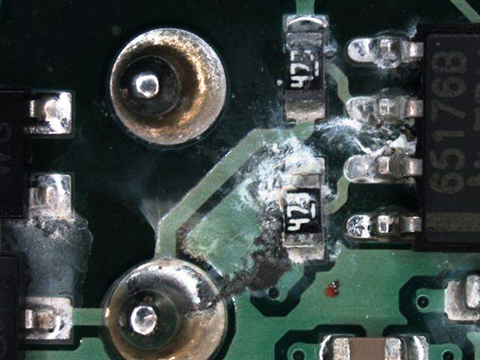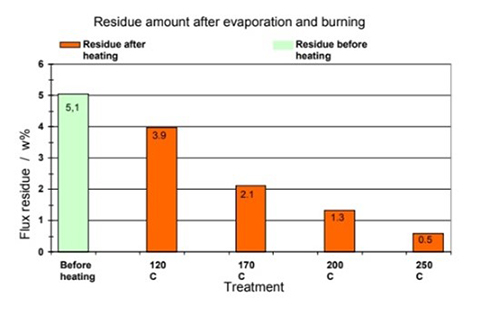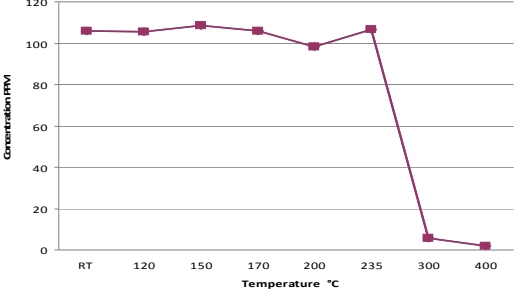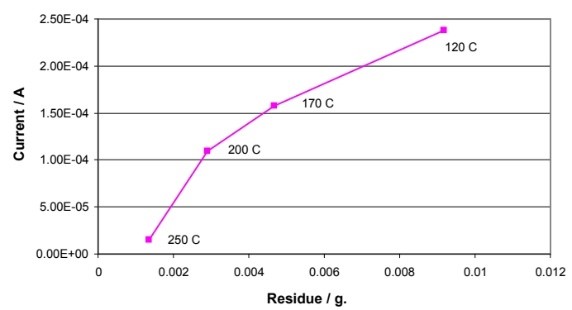Effect of Flux Residues on Corrosion of Electronic Devices_Shenzhen Fitech

Effect of Flux Residues on Corrosion of Electronic Devices
With the development of miniaturization of electronic devices, corrosion reliability has become a serious problem for today's electronic equipment. residues on the surface of the PCBA is a key factor in accelerating corrosion, these residues often come from the flux in the solder paste, flux in the non-volatile and activation compounds in the high content, can improve fluxing performance, is conducive to the formation of excellent welded joints, but at the same time will also produce a higher number of flux residues resulting in Chemical corrosion.

Figure 1. Corrosion due to flux residue
Fluxes currently in use on the market are usually rosin-based, water-soluble or no-clean fluxes. Rosin-based and water-soluble fluxes require cleaning after soldering. No-clean fluxes typically use weak organic weak acids (WOA) as activators, including glutaric, succinic and adipic acids, which are acidic ingredients. The general principle of no-clean fluxes assumes that no harmful flux residue is left behind after soldering, as the flux will completely evaporate during heat exposure during the soldering process. However, if cleaning is not performed, aggressive flux residues may still be generated.
In order to investigate the effect of flux residues on the corrosion of electronic devices, Jellese et al. used X-ray fluorescence spectroscopy (XRF) to study the decomposition products of flux residues as a function of temperature by using no-clean flux under different soldering conditions in wave soldering, TGA to study the decomposition of flux and the corresponding weight change with temperature and ion chromatography (IC) to quantify ionic residues in flux residues.
Flux residues measured by weight percent as a function of temperature are given in Figure 2. The results show that the amount of residue is significantly higher at soldering temperatures below 170 ºC than at a soldering temperature of 250 ºC. At 250 ºC it was observed that 0.5 wt% of the initial flux amount remained.

Figure 2. Flux residue after heating to different temperatures
As a reference, Jellese et al. also performed TGA experiments on adipic acid, the active ingredient in no-clean fluxes, and the resulting TGA curves are shown in Figure 3. The black curve represents a low heating rate and the red curve represents a high heating rate. The results show that a higher heating rate means more residue is left at the same temperature compared to a slower heating rate. Significant volatilization and conversion of adipic acid is observed up to 250 ºC, when the acidity decreases significantly, but even at this temperature there are still clear signs of adipic acid present in the residue.

Figure 3. TGA curve of reagent grade adipic acid.
Adipic acid after exposure to different temperatures was quantified using IC (Fig. 4). The results showed that adipic acid was still present even at 235◦C. At 300 ºC, the amount of adipic acid was minimal.

Figure 4. IC analysis of adipic acid after exposure to different temperatures.
Figure 5 shows the leakage current values for 0.2 g of flux dissolved in 3 ml of deionized water after heating to different temperatures. As expected, the leakage current level decreases as the amount of dissolved residue increases. In the 200-250 ºC range, the curves show a significant decrease in the leakage current level, indicating a significant change in the heating residue in this temperature region. At a heating temperature of 250 ºC, the leakage current value of the heated residue solution is almost an order of magnitude smaller than that of the freshly evaporated residue solution.

Figure 5. Leakage current in a solution containing flux residue
No-clean fluxes do not necessarily guarantee the reliability of electronic products, so cleaning the board or using another type of flux may be a better option in extreme cases. Printed circuit boards should also be tested for cleanliness before and after soldering; contamination on unsoldered printed circuit boards often exacerbates flux residue problems.
Hansen, KS, Jellesen, MS, Moller, P., Westermann, PJS, & Ambat, R. (2009). Effect of Solder Flux Residues on Corrosion of Electronics. doi:10.1109/rams.2009.4914727

















 Back to list
Back to list



